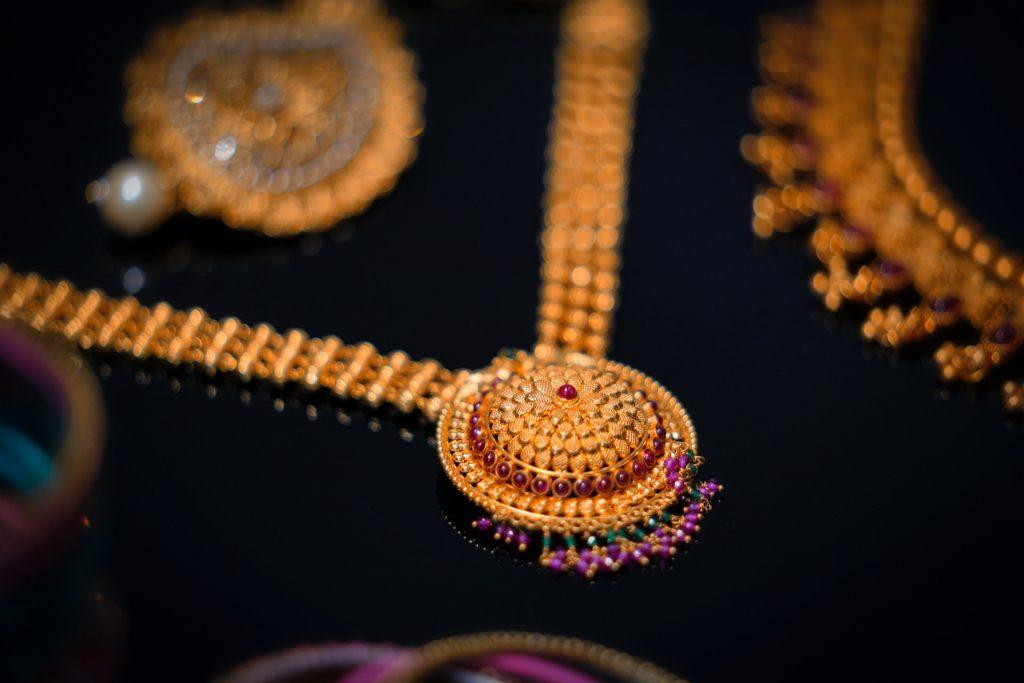Engaging in investments represents a potent financial approach enabling individuals to expand their wealth and safeguard their economic prospects. It’s a concept that resonates across generations, from conscious Gen X consumers to aspiring Gen Z individuals. Fundamentally, investing means placing your funds into assets with the anticipation that their value will increase in the long run. While there are various investment options, such as stocks, bonds, commodities, mutual funds, and more, one question that often arises is whether gold jewelry can be considered a good investment.
In this article, we will delve into the world of gold jewelry investment, exploring whether it is a wise choice and how it compares to other forms of gold investments.
Is Gold Jewelry Considered an Investment?
Gold jewelry boasts a storied past that stretches to antiquity. Its allure, scarcity, and robustness made it a prized material, frequently employed to fashion elaborate adornments donned by individuals of both genders, symbolizing affluence and influence. Additionally, gold jewelry functioned as a vehicle for passing down riches from one generation to the succeeding one.
Today, gold jewelry is predominantly associated with aesthetic appeal and design. However, when evaluating it purely as an investment—a financial asset acquired to generate income or appreciation—it becomes apparent that it aligns well with these objectives.
How Does It Compare to Actual Gold?
When considering gold jewelry as an investment, it’s crucial to understand how it compares to investing in gold itself. Gold jewelry is typically crafted from 916 gold (22K) or 999 gold (24K), and its price is closely pegged to the prevailing gold price at the time of purchase. This implies that when the price of gold surges, the worth of your gold jewelry also goes up. While short-term fluctuations in gold prices are challenging to predict, the long-term performance of gold as an appreciating asset is consistent.

Gold jewelry also functions as an excellent hedge against inflation. As a safe-haven asset, gold performs particularly well in high inflationary environments. Over the years, data from the World Gold Council shows that gold has returned an approximate average of 15% per annum during periods of high inflation and just over 6% per annum during periods of lower inflation.
Furthermore, gold is a non-ferrous metal, which means it does not tarnish or rust and can maintain its pristine condition for years, provided it’s well cared for. Gold jewelry is incredibly durable, and if the design is chosen wisely, it can remain evergreen in style, allowing you to enjoy its beauty for years to come.
Is It Considered A Good Investment?
One of the key advantages of gold jewelry as an investment is its physical portability. Compared to digital or paper-based assets like stocks, bonds, ETFs, or cryptocurrencies, gold jewelry provides the unique advantage of quickly moving wealth from one location to another. This level of liquidity simplifies the process of pawning your gold jewelry at well-regarded pawnshops, facilitating swift sales and cash exchange.
In addition to its financial attributes, gold jewelry carries significant sentimental value. It’s often purchased as a meaningful gift, creating a unique emotional connection to the piece. This sentimental value adds to the overall worth of gold jewelry, making it an investment that encompasses both financial and emotional aspects.
However, there are potential arguments against gold jewelry as an investment. Some critics point out that gold jewelry can be damaged, although this primarily refers to the jewelry piece itself rather than the gold element. Gold possesses the quality of malleability, enabling it to be skillfully shaped into detailed creations. Take, for instance, 916 gold (22K), which exhibits greater strength and durability, rendering it appropriate for everyday use. If your gold jewelry is damaged, it can be repaired by a skilled jeweler.
Another criticism is the high mark-up costs associated with gold jewelry. While some articles and naysayers argue that gold jewelry is a poor investment due to these mark-ups, it’s important to note that the workmanship prices are often transparent, particularly at reputable jewelry stores. The intricate design of a jewelry piece influences the workmanship fees, and knowing what you’re paying for the craftsmanship allows for a more informed decision.
How to Invest in Gold Jewelry?
Delving into gold jewelry investments demands meticulous deliberation. It’s crucial to verify the genuineness of the gold jewelry. Always make purchases from trustworthy and legitimate suppliers who furnish comprehensive information about their merchandise. Reputable online jewelers should possess an Assay Assured certification or be featured in Assay Assured’s web directory for jewelry retailers. This not only validates the authenticity of your acquisition but also guarantees you receive precisely what you anticipate.

Selecting a plain, solid gold piece of jewelry is often recommended for investment purposes. While intricate designs may be more aesthetically appealing, they also come with higher workmanship costs. Pieces like solid gold chains or bracelets require minimal craftsmanship, making them ideal choices for investment. Gold sovereign coins, which necessitate no craftsmanship and can be readily liquefied, are also favored choices for investment.
Professional appraisal is a crucial step when investing in gold jewelry. Calculating the worth of the piece allows you to determine how much you should pay for it to make it a worthwhile investment. While some jewelry stores offer professional appraisals upon purchase, it’s advisable to get an appraisal from a third party if the jeweler does not offer this service. Conducting an annual appraisal of your jewelry guarantees the currency of your insurance coverage.
Finally, it’s essential to invest in gold jewelry that you genuinely like. The joy of investing in jewelry lies in owning and wearing pieces that you enjoy. Purchasing jewelry you like makes the investment more enjoyable and can lead to more informed purchasing decisions.
Gold Jewelry Can Be A Good Investment
In conclusion, gold jewelry can indeed be considered a good investment. Its ability to retain value over time, act as a hedge against inflation, and offer sentimental value make it a multifaceted asset. Gold jewelry’s physical portability adds a layer of liquidity not found in other investment options. Despite certain potential objections, it continues to be a prudent option for individuals seeking to make wise financial investments.
When pondering an investment in gold jewelry, it’s essential to establish well-defined goals and a specific time frame. Professional advice can also be beneficial in guiding your investment choices. Ultimately, gold jewelry is an evergreen asset that combines financial growth with emotional and aesthetic satisfaction. It has stood the test of time as a valuable asset and is likely to continue doing so for many years to come.
